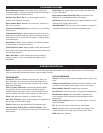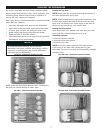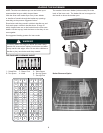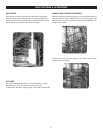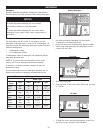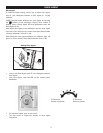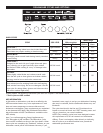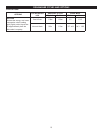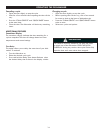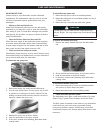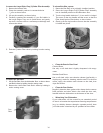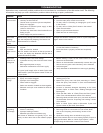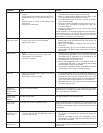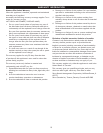
18
Problem Cause Action
Odor 1. Food debris is present at the bottom of the dish-
washer.
2. Food particles are present near the door seal.
3. Dishes left too long in unit before running a cy-
cle.
4. Residual water is present at the bottom of the
dishwasher.
5. Drain hose is obstructed.
1. Remove the lters and clean according to the “Check/
Clean the Filter System” section of this manual.
2. Refer to “Clean the Door Gasket and Door Seal” in the
Care and Maintenance section of this manual .
3. Run a Quick Rinse cycle if you do not intend to immedi-
ately wash the dishes.
4. Ensure the unit has completely drained from the last cy-
cle. Refer to the “Canceling or changing the cycle” sec-
tion of this manual.
5. Remove any obstructions from the drain hose by calling
qualied personnel.
If odor still persists, run the Normal/Regular cycle until it ush-
es, then open the door to interrupt the cycle, and place an
8 oz. cup of distilled white vinegar solution on the top rack.
Close the door and allow the cycle to nish.
Dishwasher not
lling with water
1. Restriction in the water supply system.
2. Previous wash cycle was not completed.
3. Delay-start is active.
1. Ensure that the water supply valve (typically located under
kitchen sink) is open and check that the water supply line
has no kinks and clogs.
2. Refer to the “Canceling or changing the cycle” section of
this manual.
3. Cancel the delay-start or wait until delay-start time com-
pletes (times out). Refer to the “Delay Start” section of
this manual.
Water Leaks 1. Suds
2. Door seal could be pulled away from track.
3. Condensation vent is blocked.
4. Improper installation.
1. Wrong type of detergent results in suds and leaks. Use
only dishwasher detergents. If suds still persist, then add
one tablespoon of vegetable oil at the bottom of the
dishwasher and run the desired cycle.
2. Ensure that door seal is in the track.
3. Ensure that condensation vent is not blocked. Refer to
“Loading Extra Tall Items” in the Preparing and Loading
the Dishwasher section of this manual.
4. Have proper installation veried by qualied personnel
(water supply, drain system, leveling, plumbing).
Tub stains 1. Stains on the dishwasher interior are due to
hardness of water.
2. Silverware in contact with tub.
1. Concentrated Lemon juice can reduce the build up of
hard water stains. Run a normal cycle until it ushes and
interrupt the cycle and then place an 8 oz. cup of the
concentrated lemon solution on the top rack and nish the
cycle. This can be done periodically to avoid build up.
2. Ensure that the silverware does not make contact with the
tub while running a cycle.
Streaks on
glassware or
residue on the
dishes
Incorrect rinse agent setting. Depending on the hardness of water, adjust the rinse agent
dispenser. Refer to “Adding Detergent and Rinse Agent” sec-
tion in this manual for adjustment.
Fascia panel
discolored or
marked
Abrasive cleaner used. Use mild detergents with soft damp cloth.
Noise during
wash cycle
The dishes may not be arranged properly. Water circulation sound is normal, but if you suspect items are
banging into each other or into the spray arms, refer to the
“Preparing and Loading” section of this manual for optimal
arrangement.
Detergent
dispenser cover
will not shut
1. Improper operation of detergent cover.
2. Previous cycle has not been nished, reset, or
cycle was interrupted.
1. Refer to “Adding Detergent and Rinse Aid” section of
this manual for instructions on opening and closing the
dispenser.
2. Refer to “Canceling a cycle” and “Changing a cycle”
information in the Operating the Dishwasher section of
this Use & Care Guide
Unable to select
desired cycle
Previous cycle has not nished. Refer to “Canceling a cycle” and “Changing a cycle” infor-
mation in the Operating the Dishwasher section of this Use &
Care Guide.



